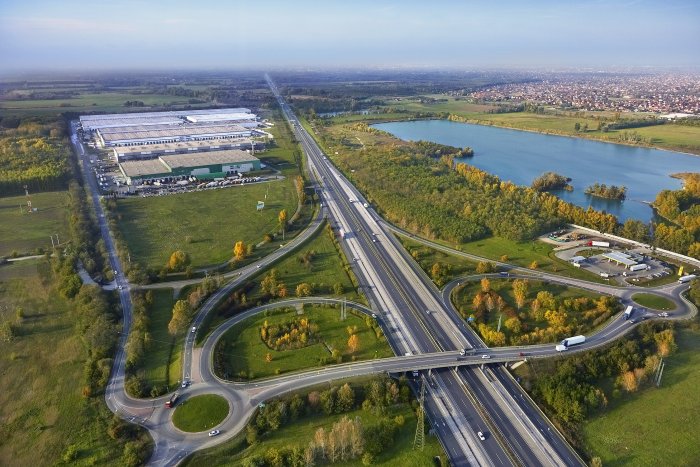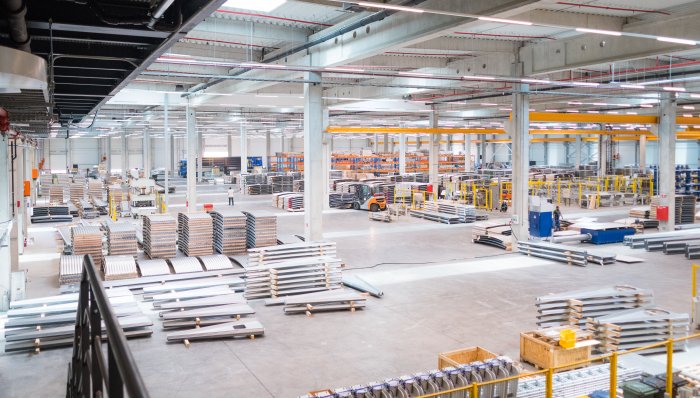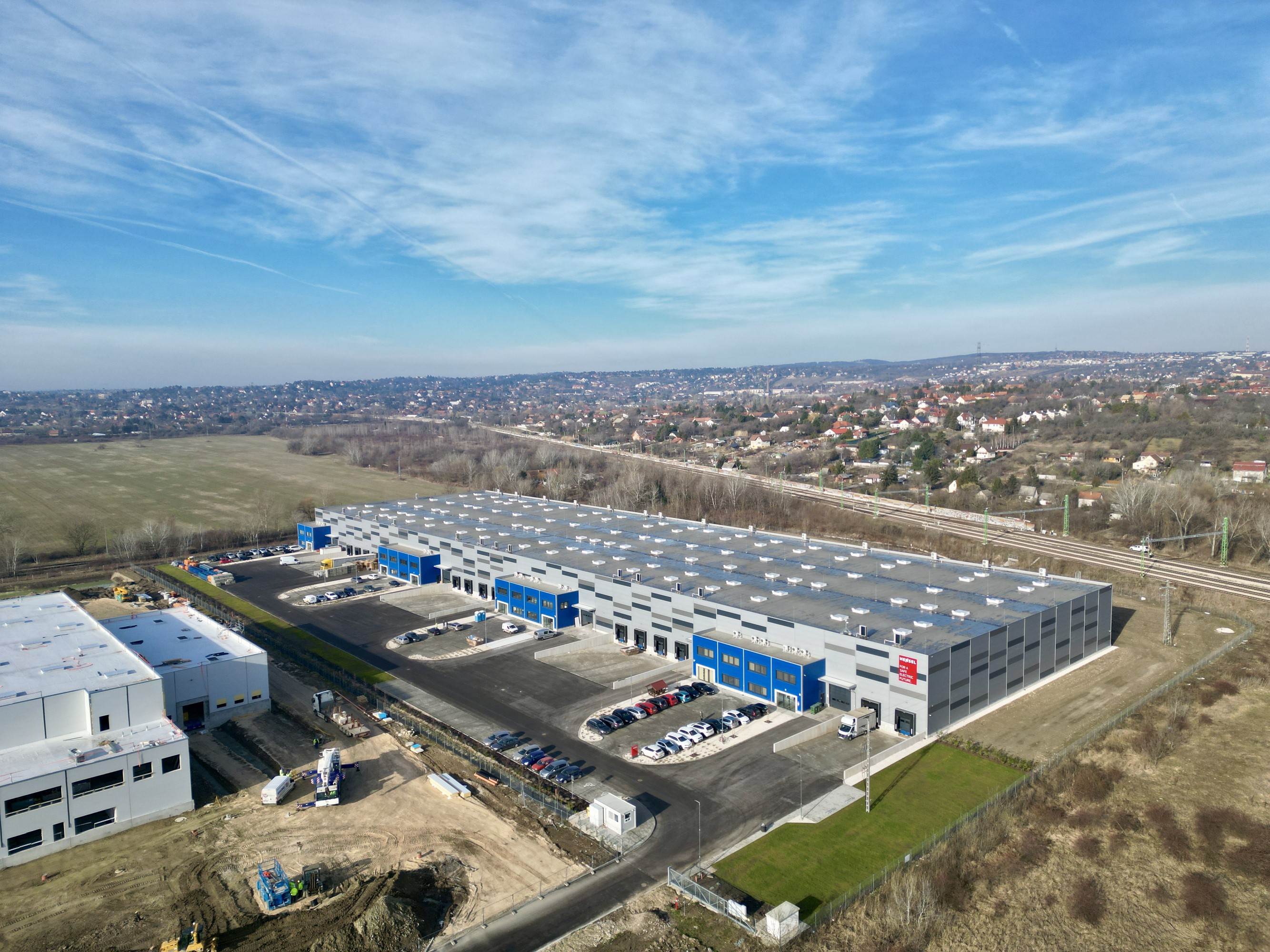Hungary’s Industrial Market Positively Booming

Prologis Park Budapest Gyál.
Analysts see the industrial and logistics market as the real estate sector in the most favorable post-pandemic position, with the growth in e-commerce significantly increasing demand, along with continued development of the automotive, light industrial, and related industries.
Demand is strong, with Hungary having the lowest vacancy rate in the Central European region. However, more speculative development is regarded as necessary for further market growth, particularly in provincial cities where developer-led development projects are quite rare.
“Over the last few years, we have experienced a significant increase in demand for high-quality industrial developments across CEE; still, we believe that supply can meet that in the Hungarian market,” comments Rudolf Nemes, CEO of HelloParks.
“However, growing near-shoring activities from the Far East to Hungary with the construction of the Fényeslitke Cargo Terminal [295 km northeast of Budapest by road], a gateway of the New Silk Road, could generate a boom in demand over the next couple of years,” Nemes adds.
Total modern industrial stock in the Budapest area stands at more than 2.5 million sqm, according to the Budapest Research Forum (BRF), consisting of CBRE, Colliers, Cushman & Wakefield, Eston International, JLL, and Robertson Hungary. There is an overall vacancy rate of 2.6%.
Underperforming
Some experts believe Hungary is underperforming in comparison with other major Central European markets. The Czech Republic, a similar-sized country, has more than nine million sqm of class “A” industrial space.
Gábor Halász-Csatári, head of industrial agency at Cushman & Wakefield Hungary, argues Budapest is in a similarly strong position to Prague, although Hungary lacks the regional hubs beyond the capital found in the Czech Republic and Poland.
“In the first half of 2021, circa 160,000 sqm of newly developed stock was handed over, coupled with a new demand volume of 194,000 sqm. think it is fair to say that developers have been quite accurate with their planning,” Halász-Csatári says.
“Having said that, there is another 300,000 sqm under construction in Budapest and its vicinity alone. With a lot of speculative space coming onto the market, there is no necessity or direct need for built-to-suit seen, but rather pre-lease,” he explains.
“Győr, Kecskemét, Miskolc, Debrecen; these are all hotspots today for industrial developments. New demand tends to consist of suppliers of automotive producers and large manufacturing companies. The incentive structure in Hungary remains very attractive for FDI, and the Hungarian’ countryside’ is a competitive environment for any newcomer. Nearshoring and the shortening of supply chains have a noticeable effect on the development of regional hotspots,” Halász-Csatári adds.
CBRE has traced more than 300,000 sqm of industrial space under development and due to be completed in the greater Budapest area: More than 50% of that is already committed.

CTPark Budapest West.
Budapest-centric
Total modern industrial stock across Hungary is put at 10.8 million sqm as of summer 2021. Of this, 3.75 million sqm is operating on a lease basis, with the remainder owner-occupied. The majority of the properties are located in the Budapest area.
The CTP Hungary portfolio consists of 660,000 sqm of gross leasable area that is almost fully let. The developer currently has eight projects under construction in the Budapest area and regional cities such as Győr, Debrecen, Szeged, Komárom, and Tatabánya.
“The Hungary market is very heavily Budapest-biased; logistically, a lot of companies prefer to stay on the ring road in and around Budapest,” comments Dávid Huszlicska, country head of CTP Hungary.
“There are many companies that see the possibility of going to the countryside; we could see this happening thanks to local government support that enables new companies to enter these cities,” Huszlicska adds.
Industrial development schedules tend to be quick, provided that the site is ready for breaking ground and has, or is in the process of obtaining, a building permit, Halász-Csatári says.
“Given the unparalleled demand for industrial development sites, the biggest challenge right now is finding well-located, adequately sized plots that are ready for development,” he warns.
“Permitting and construction are as straightforward as before; with a competent team in place, a new industrial project could be realized in 10-12 months from permitting to handover,” the head of industrial agency says.
Sustainability Growing
“Sustainability is slowly but noticeably becoming more important in industrial and logistics too. It is more frequent that international tenants must comply with global sustainability directives; hence, their tenements must reflect sustainable solutions. Most developers are now conscious of this trend and use it in their designs as a selling point,” Halász-Csatári notes.
Industrial developers and park operators are building more highly specified and sustainability-accredited projects in response to changing tenant demands and regulations.
Domestic and international developers increasingly seek BREEAM and LEED accreditation for their parks. Tenants are looking to save on utility costs, recognize the importance of staff wellbeing, and want green areas, changing facilities for cyclists, and electric charging units. Nowadays, they must also observe COVID precautions and face the need to reduce the carbon footprint of their projects.
“Most developers are now conscious of this trend and use it in their designs as a selling point,” says Halász-Csatári. Prologis, for example, is committed to following BREEAM standards, and CTP is developing to the BREEAM in-use “Excellent” standard for buildings across its Central European portfolio.
“The buildings in HelloParks’ greenfield projects will all be BREEAM certified, so these requirements will be an integral part of the development from concept design through construction to operation, ensuring the most environmentally responsible criteria are met,” comments Nemes.
“In addition, further sustainable solutions are planned and are being prepared. From an energy point of view, the most significant environmentally friendly solution provided by HelloParks will be the ability to cover its entire energy needs for the operation of the offices of our first logistics building in Maglód with a solar park installed on the roof,” Nemes adds.
This article was first published in the Budapest Business Journal print issue of October 22, 2021.
SUPPORT THE BUDAPEST BUSINESS JOURNAL
Producing journalism that is worthy of the name is a costly business. For 27 years, the publishers, editors and reporters of the Budapest Business Journal have striven to bring you business news that works, information that you can trust, that is factual, accurate and presented without fear or favor.
Newspaper organizations across the globe have struggled to find a business model that allows them to continue to excel, without compromising their ability to perform. Most recently, some have experimented with the idea of involving their most important stakeholders, their readers.
We would like to offer that same opportunity to our readers. We would like to invite you to help us deliver the quality business journalism you require. Hit our Support the BBJ button and you can choose the how much and how often you send us your contributions.









